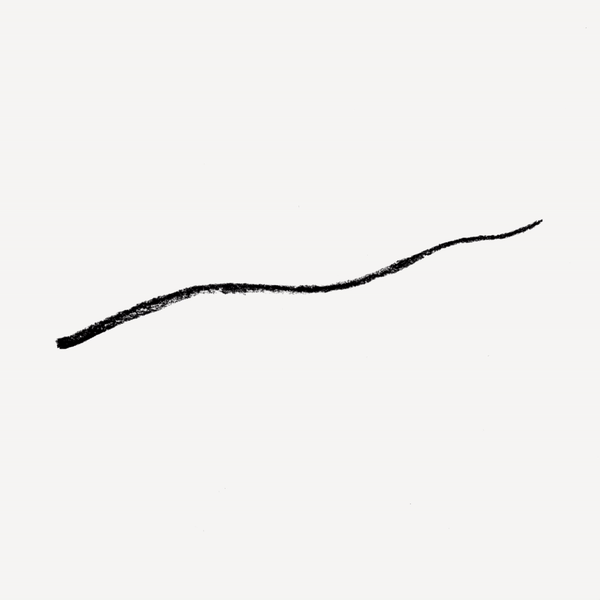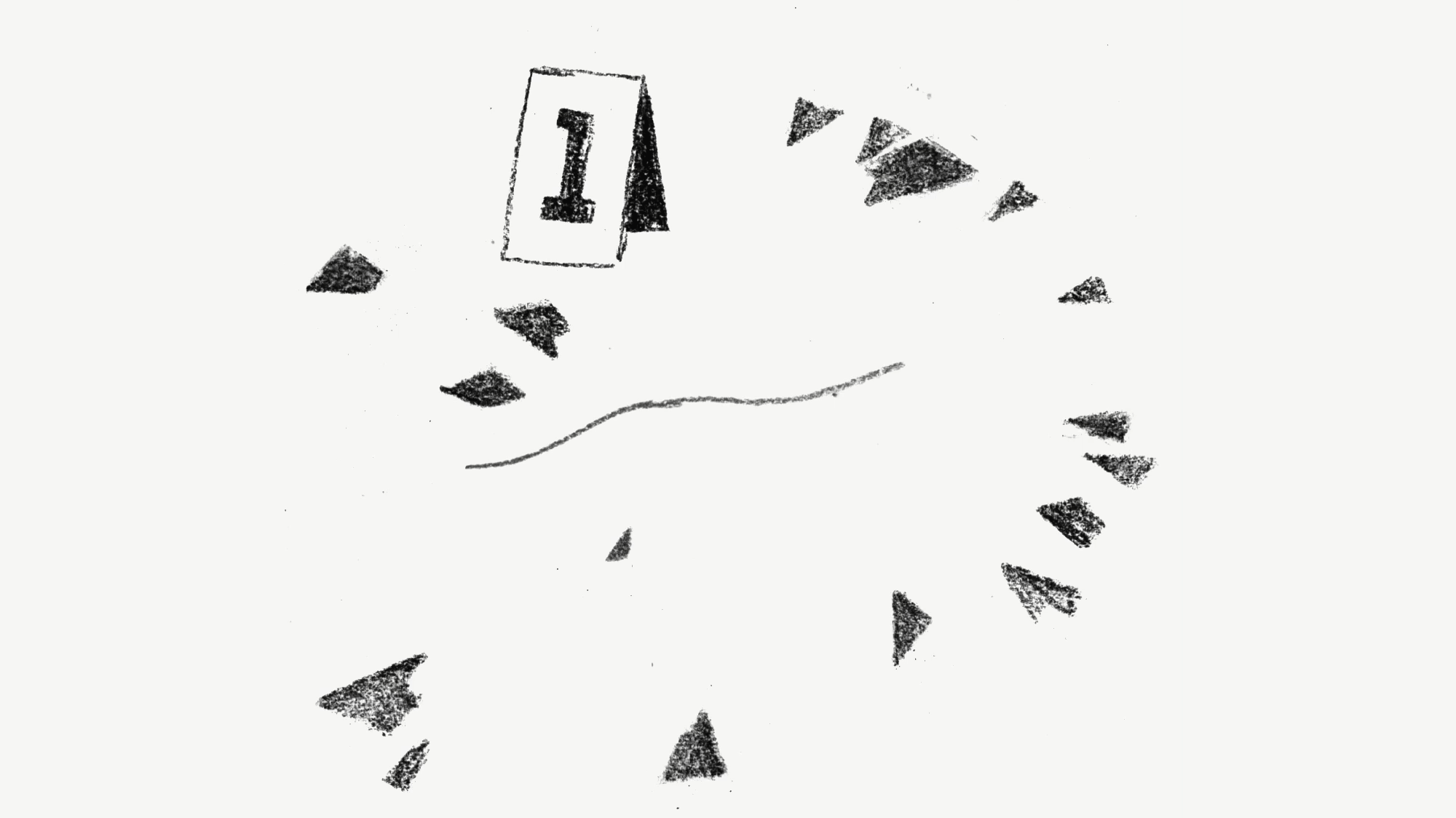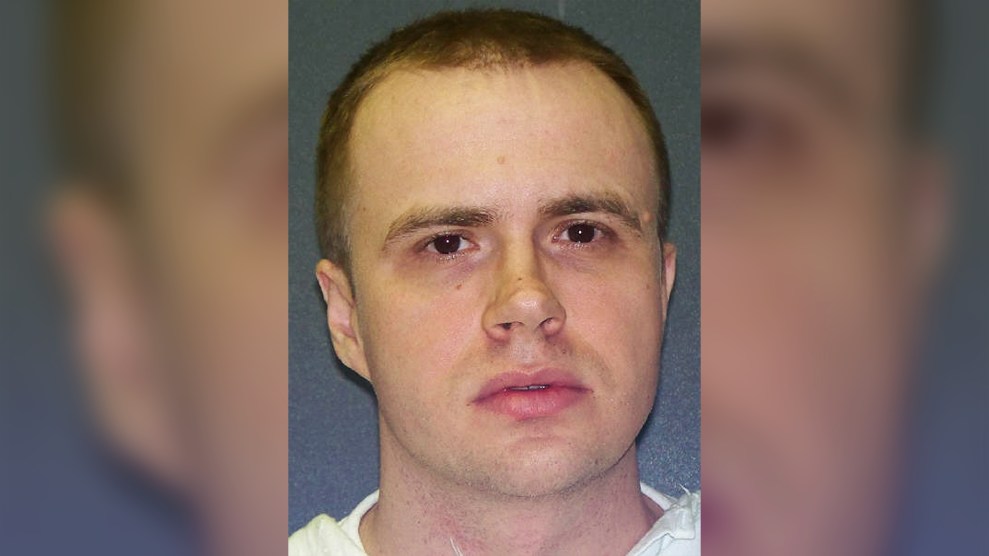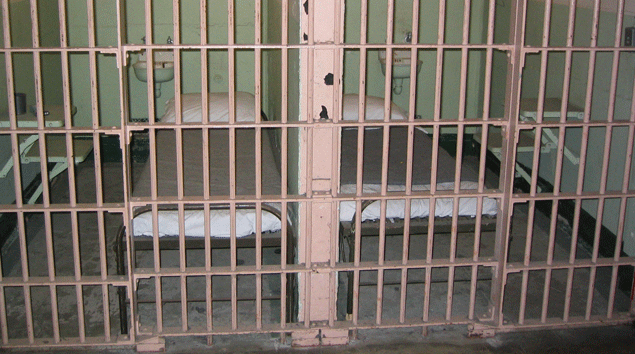This article was published in partnership with The Marshall Project, a nonprofit news organization covering the US criminal justice system. Sign up for their newsletters, and follow them on Instagram, TikTok, Reddit, and Facebook.
In the three decades since Florida sent Gerald Delane Murray to death row for murder, he has watched the case against him crumble. DNA evidence prosecutors used to link him to the crime was handled so badly that the state’s highest court threw it out—twice. A jailhouse witness who testified that Murray confessed to the rape and murder later said he may really have learned about the crime from watching “America’s Most Wanted.”
Now, after four separate trials and multiple appeals, Murray and his lawyers argue that the main thing keeping him behind bars is a single piece of evidence: pubic hair found at the scene of the crime. Back in the early 1990s, an FBI analyst looked at the hair under a microscope and found it “consistent” with Murray’s, meaning the hairs shared some visual characteristics. At trial, the agent said that in his experience, it was “highly unlikely” that the hair came from someone other than Murray.
But Murray says—and many scientists and lawyers agree—that this kind of testimony is nonsense. That’s because hair, unlike DNA, doesn’t have enough unique characteristics to identify a particular person.
“The scientific community says it’s ‘beyond the limits of science,’” Murray told me when I visited him in prison in rural Raiford, in northern Florida.
Murray maintains he’s innocent. His lawyers are fighting to get him a new trial, arguing that his conviction hinged on flawed and false testimony.
“It comes down to the microscopic hair analysis and a jailhouse rat,” Murray said. “That’s it.”
A spokesman for the prosecutors said they wouldn’t comment because the litigation is active. In the past, they have argued that Murray has already had the chance to challenge the hair evidence.

In courtrooms across America, “scientific evidence” used to imprison people for heinous crimes has been increasingly discredited. Blood-spatter patterns, arson analysis, bite-mark comparisons, even some fingerprint evidence have all turned out to be unreliable.
A quarter of the 3,439 exonerations tracked by the National Registry of Exonerations involved false or misleading forensic evidence.
But these exonerations are only the tip of the iceberg, some experts say. Many more people remain incarcerated despite questions about the forensic analysis of evidence used against them. Cases are not automatically reopened when a field of forensics is questioned or even discredited. That’s true of hair analysis, which has been under scrutiny for decades: Government studies have found that in hundreds of cases, hair analysts from the Federal Bureau of Investigation exaggerated their findings in reports and court testimony.
A new report by the exoneration registry found 129 cases in which people were falsely convicted at least partly because of flawed hair analysis and testimony. Fifteen of the defendants were sentenced to die. Exonerees lost almost 2,000 years of their lives in prison and cost taxpayers hundreds of millions of dollars. And there may be many more people behind bars who were convicted because of bad hair evidence.
“I am willing to speculate that—because the process of exoneration is so difficult—those exonerees could represent between two and 10 times as many wrongly convicted people,” said Simon Cole, a professor at the University of California, Irvine, who is the director of the registry and an author of the study. Many of them “aren’t ever going to be able to prove their innocence to the state’s satisfaction and become exonerated,” he said, noting that overturning a verdict requires very persuasive evidence, such as DNA, and a lot of time, money, and legal help.
All sentences that involved hair analysis should be reviewed, he said, “to see what other evidence, if any, supported the conviction.”
The FBI, which did thousands of hair analyses, continues to say that the technique is valid, and that problems involved exaggerated testimony. But its policy since 2000 has limited the use of hair microscopy to preliminary screening that must be backed up by DNA, a spokeswoman said.
From barely visible peach fuzz to velvety locks, wiry mustaches, and curly pubic strands, hair covers almost all of our bodies. It’s constantly shedding. The average human head alone contains as many as 120,000 hairs and loses about 100 a day. As hair falls out, it can transfer to people and clothing, which is why it so often becomes evidence in crime investigations.
The first reported use of hair in a US murder case was in 1855, according to a 2016 article in the Virginia Journal of Criminal Law. John Browning and his son were tried for the murder of a cotton plantation manager in the Mississippi Delta, whose injuries included a broken neck. A search of the Browning home revealed a rope tied into a noose containing several drops of blood and a few hairs. Prosecutors presented evidence that the hairs appeared to match the color and length of the victim’s hair. But according to the authors, Chris Fabricant of the Innocence Project and Tucker Carrington of the University of Mississippi Law School, a state supreme court justice found the evidence insufficient, and the Brownings weren’t convicted.
The science of hair analysis ascended in the late 1970s after the FBI published the 53-page “Microscopy of Hairs: A Practical Guide and Manual,” identifying characteristics—too small to see with the naked eye—that can be used to compare hairs. Agents trained for a year to learn how to discern the differences and similarities among hairs collected at crime scenes and samples plucked from suspects. By examining characteristics like pigment distribution and structure, the agents could purportedly determine whether a strand came from an animal or a human. Other characteristics helped form narratives about a crime: the person’s race, the area of the body where the hair originated, and whether it was pulled, cut, or fell out.
The manual said hair analysis was “not a positive means of personal identification.” But it also said that when two hairs were randomly selected from a population of people, it was rare that analysts couldn’t tell them apart.
What the manual didn’t say is that there have never been any scientific studies to show whether three, 300, or 3 million people have the same hair characteristics, legal experts say. Even the hairs on a person’s head can vary—the grays on a man’s temples, for example, look different from the black hairs on his crown. Still, hair microscopy became instrumental in more than 20,000 cases before the year 2000 and led to countless convictions.
For decades, FBI agents gave two-week hair-analysis training courses to hundreds of state and local hair examiners, raising concerns that flawed hair testimony may have tainted thousands more cases.
The “science” of microscopic hair analysis started unraveling in the 1990s, and not just because DNA analysis emerged on the scene. An FBI chemist, Frederick Whitehurst, started documenting his concerns about sloppy work and poor conditions in the agency’s crime lab. In 1999, a Justice Department task force hired independent experts to scrutinize the work of one of its most prolific hair experts. They reviewed more than 150 cases and found problems with 96% of them, including some that resulted in death penalties.
The review focused on cases before 2000 when the FBI started using mitochondrial DNA testing in addition to microscopic hair analysis. This DNA analysis doesn’t identify an individual but provides information about common relatives. In 2009, the National Academy of Sciences released a landmark report on the state of forensics, emphasizing “no scientific support” for using hair comparisons without DNA.
Despite the Justice Department’s review of the FBI’s lab work, a 2012 investigation by The Washington Post found that the task force didn’t often share its information with defense lawyers. Nor did the review expand to all the FBI lab’s hair work, even after DNA tests exonerated two men who had been convicted in part by testimony from different FBI hair analysts, according to a scathing review of the task force’s work by the inspector general’s office in 2014.
Peter Neufeld, co-founder of the Innocence Project, a nonprofit legal organization, wanted to know how many cases had been tainted by bad hair testimony. So he asked the FBI, Department of Justice, and National Association of Criminal Defense Lawyers to collaborate with his organization to review FBI cases involving hair microscopy.
After that review, the FBI made headlines with a 2015 press release admitting that nearly every examiner in the agency’s 28-person hair and fiber unit had given flawed testimony in almost all the 268 convictions that had been scrutinized. Thirty-three of the defendants had been sentenced to death. Nine had been executed, and five died of other causes while in prison.
Legal analysts called the announcement “a watershed in one of the country’s largest forensic scandals, highlighting the failure of the nation’s courts for decades to keep bogus scientific information from juries.”
FBI Director James Comey issued a letter asking every governor for help collecting transcripts from prosecutors in cases where bureau hair examiners testified. Comey also asked governors to encourage state and local labs to ensure their FBI-trained examiners were staying within the bounds of science. “Hair is not like fingerprints,” Comey wrote, “because there aren’t studies that show how many people have identical-looking hair fibers.” In light of a series of DNA exonerations in cases involving hair analysis, he expressed the importance of making sure there “aren’t other innocent people in jail based on our work.”
Only 17 states tried to do those reviews, according to the exoneration registry.

A few years ago, a source sent me a nine-gigabyte thumb drive containing thousands of reports, papers, historical documents, and criminal cases in which microscopic hair analysis played a role in convictions. I’ve spent hours combing through those pages and interviewing legal experts familiar with the cases. Eventually, that led me to Gerald Murray.
Murray says he was asleep at his mother’s house in Jacksonville, Florida, on a September morning in 1990 when a neighbor, Alice Vest, was found lifeless and naked, draped across her bed. The 59-year-old woman had been stabbed more than 20 times, raped, and strangled to death with a curling-iron cord, which was still wrapped around her when the coroner examined her wounds, according to his report.
Vest, whose obituary described her as a church-going grandmother who managed an accounting firm’s office, had spent the day shopping and sipping cocktails with her friend Linda Engler, according to a police report. Vest called Engler at 11:30 that night to let her know that she’d arrived home safely. They were supposed to speak again early on Saturday morning.
Engler called, but Vest didn’t pick up.
In the middle of the night, someone had cut the phone wires in Vest’s carport with a pair of garden shears and crept into her home through a kitchen window, police reports said. She’d been attacked with anything an intruder could grab: a knife, scissors, a candleholder, broken liquor bottles, belts, a metal bar. The contents of Vest’s purse were spilled across the floor in the den, and some of her jewelry was missing, including a necklace with a gold coin pendant that Engler said she’d always worn.
Months later, an anonymous phone call led detectives toward Murray and Steven Taylor, both in their early 20s. Witnesses said the men had been together at a local pool hall called the Corner Pocket on the night of the murder. Around midnight, a friend dropped them off near Murray’s house, on the same street as Vest’s home.
Prosecutors presented forensic evidence matching Taylor to semen on a blouse near the victim. The jury found Taylor guilty of all charges: first-degree murder, burglary, and sexual battery. On December 9, 1991, he was sentenced to death row, where he remains.
The case against Murray was always more complicated.
The state’s lynchpin was pubic hair found on Vest’s body and on a white nightgown. An analyst named Joseph DiZinno at FBI headquarters in Washington, DC, had examined samples of Murray’s pubic hairs and determined that they were microscopically consistent with hairs at the scene.
On April 9, 1992, a Florida grand jury indicted Murray.
Seven months later, he crawled through an air conditioning duct and escaped from the Duval County Jail. He fled to Las Vegas, where he lived for more than half a year before being recaptured.
In opening remarks at Murray’s 1994 trial, Bernie de la Rionda—on his way to becoming one of “America’s Deadliest Prosecutors,” according to Slate—said that Murray and Taylor had been working together when they broke into Vest’s home and tortured her. But Murray “attempted to be smarter than Taylor” by not leaving his semen at the scene.
De la Rionda said he was confident Murray was the killer: “After you consider all the evidence, you will have but one decision to make, and that will be the defendant is guilty of first-degree murder, of burglary, and of sexual battery.”
The jury agreed.
At Murray’s 2003 retrial, DiZinno was asked about the statistical probability that someone else might have hair with characteristics similar to Murray’s. “We can’t say what the probability is,” DiZinno answered, “but what I can say is, based on my experience, it’s rare that we cannot distinguish between microscopic characteristics of hair from two different individuals by side-by-side comparison.”
How did he define the term rare? “I can remember maybe once or twice in the eight years that I compared hairs that I couldn’t distinguish between hairs from two different individuals,” DiZinno said. “That’s looking at hundreds of cases, thousands and thousands of hairs. So that’s where rare comes from.”
He also testified that “hair comparings are not a means of absolute positive identification.”
DiZinno retired in 2008 as director of the FBI crime lab. Today, he’s 70 years old, living in Virginia, teaching forensics at George Mason University, and doing forensic consulting work. When we spoke on the phone last June, he told me he’d had a career as a dentist before selling his practice to follow his dream of becoming an FBI agent, which he did in 1986.
He spent three years investigating bank robberies, kidnappings, and extortions, then transferred to the crime lab, where he trained to be a hair and fiber analyst. In 1991, he received an evidence box containing hairs from the Vest murder investigation and comparison samples of head and pubic hairs plucked from Gerald Murray.
I asked DiZinno if he stood by his testimony in Murray’s trials. “That is what I said at the time; that’s what we knew at the time,” he told me. “Obviously, I would have rather had mitochondrial DNA to confirm that, if it had been available to us then.”
DiZinno said that he consistently provided an important caveat in his testimony: “The prosecutor may not want you to say this, but I would always work in that it should be remembered that hair comparisons are not a means of personal identification.”
That caution might have been lost on jurors, however. Cole, the exoneration registry director, said one of the major findings of his study was that warnings about the limitations of hair analysis didn’t matter. “Even when the testimony was carefully phrased, it contributed to the conviction of innocent people,” he said. “I suspect that this is because the appearance on the stand of an expert witness, who said they were using science and the evidence implicated the defendant, led the jury to think that the evidence must have been powerful evidence of guilt, even if the expert avoided saying that explicitly.”
The registry’s report details dozens of cases where hair microscopy helped tip the scales of justice—often in combination with racial bias, deceptive testimony from jailhouse snitches, false confessions, and mistaken witness identification.
Many of the wrongful convictions resemble that of Anthony Broadwater, exonerated in 2021 after spending 16 years in prison for the rape of a college student, Alice Sebold—author of the memoir “Lucky,” about her attack, as well as “The Lovely Bones,” the bestselling novel and movie. The only physical evidence used to convict Broadwater, whom Sebold misidentified, was a pubic hair collected from her after the assault. An FBI crime lab specialist compared it to pubic hairs tugged from Broadwater, and determined that they were “consistent” with being from the same person, according to the registry’s review of the court transcripts.
Documented problems with the hair comparison and a police lineup prompted prosecutors to vacate his conviction. Broadwater sued New York State, contending police and prosecutorial misconduct led to his wrongful imprisonment. In a March 2023 settlement, the state agreed to pay Broadwater $5.5 million.
In more than half of hair-related exonerations, the defendant was Black, according to the report. A third of the exonerees listed in the report — 40 people — haven’t received a penny for their years lost in prison, because a dozen states do not have laws that provide compensation for wrongfully convicted people.

In 2013, as the Justice Department was reviewing FBI hair testimony, the agency sent many prosecutors letters notifying them that the microscopic hair comparison analysis testimony or lab report in their case included statements that “exceeded the limits of science,” and were therefore invalid. “We ask that you determine the actions your office should take in light of this error,” the letter said.
After receiving a letter about DiZinno’s testimony, De la Rionda responded to the Justice Department, saying that the state continues to oppose Murray’s efforts to get a new trial. Prosecutors disagreed with the DOJ’s findings, he wrote, but “even if the conclusions were proven, they don’t warrant post-conviction relief.” De la Rionda retired in 2018 but is still prosecuting Murray’s case, according to court filings. He did not respond to requests for comment. Nor did the daughter of the victim, Alice Vest.
The Florida Supreme Court agreed with prosecutors that Muarray had already had the chance to challenge DiZinno’s testimony, and that the FBI review of his work wasn’t strong enough to produce an acquittal at retrial, as Florida law requires. In a 2018 ruling, the court said that the underlying science of hair microscopy has not been discredited, noting that it is still used by the FBI.
Chris Fabricant, an Innocence Project lawyer who recently wrote a book about the legacy of junk science in the criminal justice system, said the Florida Supreme Court “is wrong on science, and wrong on the law.” The federal government has publicly conceded that microscopic hair analysis should be treated as “false evidence,” he said.
When I visited Murray on death row, he said the revelations since his last trial in 2003 show the hair analysis is bogus.
Wearing an orange prison suit and shackles, he sat across from me at a conference table in a windowless room with blue cinder block walls. He recapped why the Florida Supreme Court reversed his first sentence: concerns about the validity of the way the DNA was tested and contamination of the sample. The state did another DNA test before his second hearing, which ended in a mistrial, Murray said. With that test, there were questions about the chain of custody of the evidence, and again, contamination. In the third and fourth trials, courts excluded the previous DNA evidence because it had been so mishandled.
Last September, Murray asked the district court for a fifth trial, citing newly discovered evidence, including a report from a risk management company hired by the FBI to analyze the causes of flawed hair testimony. In an email, Murray told me that he believes the report shows that the FBI officials“turned a blind eye,” and concealed its misconduct because they knew it would affect prior and current cases.
The FBI acknowledged in a press release the report’s findings that hair analysts didn’t have enough guidance on how to testify accurately, but noted that the latest review “found no evidence of malicious intent on the part of examiners who made errors in reports or testimony.”
Murray’s lawyers said in an email, a judge will hear a motion to vacate his sentence partly based on newly discovered evidence.
“The juries were never told about the problems with microscopic hair analysis and how the FBI themselves had gotten their ‘matches’ wrong multiple times,” Murray wrote in an email to me. “All the juries heard was how the top law enforcement agency in the world was able to say that hairs were consistent with coming from me,” he wrote. “What would you think as a juror?”
Correction, December 15: This article has been updated to reflect the number of cases in which people were falsely convicted at least partly because of flawed hair analysis and testimony. It has also been updated to credit the illustrator Raj Jeshang.















